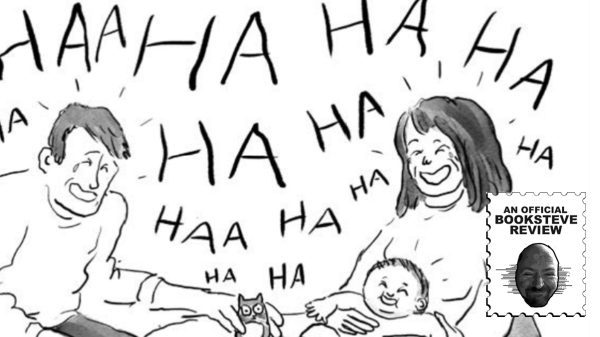
Guest review by Rory Raven
Written by George H. Schwartz, Tedi Asher,
Christopher Jones, Lan Morgan, Tony Oursler,
Jennifer Lemmer Posey, Mark Schwartz
Published by Rizzoli Electa
“Is there life after death?” is probably one of the oldest questions there is, with science, religion, philosophy, and art all weighing in.
The 19th century saw the rise of the spiritualist movement, with people holding seances in darkened parlors. The spiritualists answered with a resounding “yes!”
Some stage magicians of the period, seeing it all as little more than trickery, made careers out of saying “no!”
Conjuring the Spirit World: Art, Magic, and Mediums is a lavish backstage tour through the strange world of seances and spirits, believers and doubters.
Produced by the Peabody-Essex Museum (PEM) in Salem, MA, to accompany an exhibit of the same name, the book takes a material-culture approach, displaying and documenting art, objects, and ephemera associated with spiritualism and providing (often colorful) historical context.
The PEM’s Curator-At-Large, George Schwartz, traces the history of the spiritualist movement from its humble beginnings in an upstate NY farmhouse to stages, parlors, and even laboratories throughout America and Europe.
In 1848, two young girls named Katie and Maggie Fox were haunted by mysterious rapping sounds that echoed throughout the modest home they shared with their parents in Hydesville, NY, near Rochester. The “Rochester raps” became a local sensation, especially once the sisters revealed that the source was the spirit of a murdered pedlar, buried in their own cellar. They were soon brought to Manhattan, where they rocketed to psychic stardom, with the rich and famous coming to see what all the supernatural fuss was about for themselves.
“By the end of the century,” Schwartz writes, “this movement reportedly had millions of followers drawn to any number of Spiritualism’s facets: its anti-hierarchical access to divine forces, its support of progressive causes like abolition, its alignment with scientific thought, the sense of closure it provided for those who were unable to physically mourn the dead during the Civil War (which would be repeated during World War I), and the room it opened up for women to have roles of power and agency in a male-dominated society.”
The claims of the Fox sisters and the other self-styled mediums who came after them proved to be controversial to say the least.
Stage magicians such as Houdini and Thurston in America and John Neville Maskelyn in England were quick to level accusations of fraud, and their campaigns against trickery led them to add exposes to their acts. Many of their delightful posters are reproduced in the book – “Do the Spirits Return? Houdini Says NO and Proves It!” – along with gorgeous photos of mysterious props such as spirit rapping hands, spirit trumpets, and the “Cassadaga Propaganda” cabinet.
Schwartz provides a thorough overview, and other authors delve into specifics. There are contributions detailing mourning objects, optical illusions, spirit photography, and even spirit artwork. There are some fascinating nuggets here.
With the movement divided between skeptics and believers, with acrimony on either side, it only seems natural to look at the nature of perception and belief itself, which neuroscience researcher Tedi E. Asher does in her essay, “Belief in the Brain and Body.” She observes that belief and identity too often lead to polarization, and “choosing to learn why—and how—people believe what they do may help individuals find respect for one another, without the need for either agreement or deleterious conflict.”
The clash between mediums and magicians may take center stage, and deception is part and parcel of the topic, but the book is an exploration, not a polemic. No one is trying to convince readers to believe or doubt. The various authors are not credulous, but neither are they crusaders.
One major event in spiritualist history gets only passing mention. In 1888 Margaret Fox, now a middle-aged woman to whom the last forty years had not always been kind, confessed that the infamous Rochester raps were produced by the sisters cracking the joints of their toes.
Things had quickly spiraled out of control, and now Maggie wanted to finally set the record straight. She published a book, “The Death-Blow to Spiritualism,” hoping that would put an end to things, but it did not. Soon, down on her luck, she returned to mediumship, and the spirit raps were heard once more.
Happily, while magicians’ acts and props are discussed and illustrated, the methods and mechanics behind them are generally kept secret. There are references to offstage assistants or mediums and/or magicians using trick rope ties, but the details are left appropriately shadowy. It must have been tempting to reveal trade secrets, and I was pleasantly surprised that no one involved yielded to that temptation. There are a few patent-office blueprints here and there, but without further explanation, they are just puzzling pictures.
The PEM is a venerable Salem institution, so it comes as no surprise that material from the witch city features prominently, with a number of posters heralding traveling mediums or magicians playing Salem venues such as the Lyceum.
So it is a little surprising that local medium Charles H. Foster, “the Salem Seer,” who traveled the world supposedly reading minds, is not even mentioned. For his finale, Foster would roll up his sleeves or even unbutton his shirt to reveal that the spirits had somehow written messages, including his sitters’ innermost thoughts, on his body.
But that oversight aside, this book is just marvelous. The illustrations are beautiful, the accompanying essays are insightful, and anybody interested in seances and magic will want a copy.
About The Author
Rory Raven is a Mentalist, Mindbender, creator and guide of the Providence Ghost Walk, and
author of Haunted Providence, Wicked Conduct, and the new title, The Dorr War: Treason,
Rebellion, and the Fight for Reform in RI. For more details, visit www.roryraven.com





































































































You must be logged in to post a comment Login